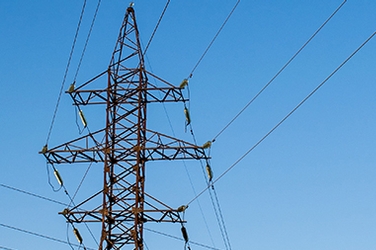Spotlight
Steeped in the energy industry
We are in the know.
FERC Order No. 2222 Aims to Facilitate Distributed Energy Aggregator Participation in Wholesale Electricity Markets

On September 17, 2020, the Federal Energy Regulatory Commission (FERC or Commission) issued a final rule, Order No. 2222, to require regional transmission organizations and independent system operators (RTO/ISO) to adopt participation models that allow distributed energy resource (DER) aggregators to participate directly in their wholesale electricity markets. The rule will require RTO/ISOs to accommodate wholesale market participation via aggregation of DERs located both beyond and behind the customer meter, including: distributed generation, demand response, storage resources, intermittent generation, energy efficiency, thermal storage, and electric vehicles. Order No. 2222 specifically requires RTO/ISOs to revise their tariffs to remove existing barriers to participation that limit the operation of these resources and the services they may be eligible to provide through DER aggregation.
Order No. 2222 requires RTO/ISOs to remove barriers to participation in wholesale electricity markets by directing them to make the following changes to their tariffs:
- establish DER aggregators as a type of market participant and allow them to register under one or more new, existing, or modified participation models in the RTO’s/ISO’s tariff;
- allow participation by all types of DER technology and allow multiple types of DER technologies to participate in a single aggregation as long as they can meet qualification and performance requirements;
- allow DERs that participate in retail programs to participate in wholesale markets;
- allow DERs to provide multiple wholesale services;
- include any appropriate restrictions on DER participation only if narrowly designed to avoid double-counting the services they provide;
- implement a minimum size requirement that does not exceed 100 kW;
- allow a single qualifying DER to avail itself of the proposed DER aggregation rules by serving as its own DER aggregator; and
- establish locational requirements for DER to participate in aggregation that is as geographically broad as technically feasible.
This rule follows the United States Court of Appeals for the District of Columbia Circuit’s (D.C. Circuit) recent affirmation, in NARUC v. FERC, of Order No. 841, which similarly directed RTO/ISOs to open their markets to participation by energy storage resources. FERC issued Order No. 841 after a notice of proposed rulemaking proposing to remove barriers to the participation of both energy storage and aggregated DERs in organized wholesale electricity markets. When the Commission on February 15, 2018, it addressed barriers facing storage resources only, and elected to seek more information before finalizing a rule on DERs. Now, having survived a jurisdictional challenge in the D.C. Circuit in NARUC v. FERC, Order No. 841 paved the way for the Commission to exercise its authority to expand wholesale market participation to DERs through Order No. 2222.In Order No. 2222, the Commission mirrored the reasoning of the D.C. Circuit when it based its authority to regulate DER aggregations on section 201 of the Federal Power Act (FPA), which grants FERC jurisdiction over wholesale sales into RTO/ISO markets, and FPA sections 206 and 205, which extend FERC’s jurisdiction over practices affecting wholesale rates. Importantly, FERC also clarified that when DER aggregators do make sales to RTO/ISO markets, most aggregators will become public utilities subject to the Commission’s jurisdiction. This designation is of particular importance to DER aggregators because public utility status imposes certain obligations on aggregators that choose to participate in wholesale markets. These responsibilities include, for example, filing rates under FPA section 205 (and potentially filing to obtain market-based rate authority), filing electric quarterly reports, submitting FPA section 203 and 204 filings related to corporate mergers and other activities, and fulfilling FPA section 301 accounting obligations. Notably, however, DER aggregators that aggregate only demand resources or only customers in a net metering program will not become public utilities under the new regulation.
FERC’s rule preempts state authority to impose conditions on DER aggregators that would otherwise limit DER participation in wholesale markets. However, although state retail regulators may not refuse to allow DER wholesale market participation, Order No. 2222 does include a limited exception for regulators of small utilities—utilities whose total electric output for the preceding fiscal year did not exceed 4 million MWh. According to the rule, RTO/ISOs may not accept bids from resources that aggregate customers of a small utility unless the retail regulatory authority affirmatively permits the small utility’s customers to participate in DER aggregation.
Order No. 2222 takes effect on December 21, 2020. Grid operators must make compliance filings to FERC by July 19, 2021.

